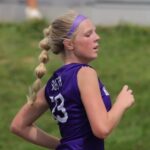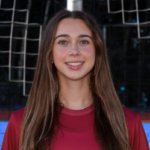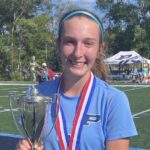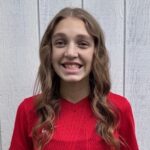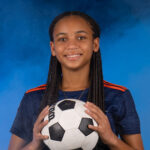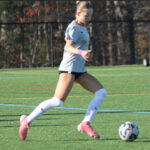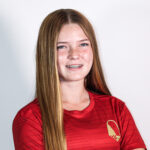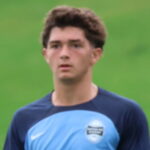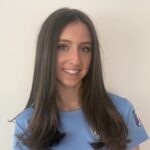PSW Q&A: U.S. Soccer scouting chief Tony Lepore talks training centers, player identification
By Charles Boehm
Few people in American soccer see the nation’s youth development system from the comprehensive view of Tony Lepore, the veteran coach who plays a leading role in scouting and advancing young talent across the nation in his position as Director of Scouting for the U.S. Soccer Development Academy.
Also a technical advisor to the DA’s Northeast division and a longtime assistant coach in the youth national team setup, Lepore has overseen major growth in the size and scope of the federation’s scouting program in recent years, including the “training centers” program which will be touching down in Leesburg, Va. this coming week (1997-98-born girls on Monday, 97-99 boys on Tuesday and 94-96 girls on Wednesday).
Lepore recently took time out from a busy schedule which routinely takes him from coast to coast, as well as across the hills and valleys of New England, to speak with Potomac Soccer Wire about U.S. Soccer’s player identification efforts, the training centers program and the ongoing challenges to finding and grooming future generations of U.S stars.
PSW: U.S. Soccer launched the Development Academy to improve the quality of training and competition for top youth players. How have your scouting and evaluation duties grown since its formation?
TP: When I first started this, I had all the Northeast — there were four of us covering the country as technical advisors at the time. So I had [Washington,] D.C. all the way up to Seacoast [United] in New Hampshire, that was like 19 academy clubs and quite a bit of ground to cover. So it’s more realistic now but still a lot of travel. Now I’ve got the Northeast [region] and we’ve got one [scout] for pretty much each of the divisions of the academy. We’ve got nine full-time guys now, but we’ve also added to their responsibilities, too…I’m always at youth national team camps as well, I’m still the assistant for the Under-14s and the -15s. But right now we’re doing all their end-of-year evaluations for all the academy clubs, which is a pretty intensive process. We want to present those to them face to face, sitting down together, so that’s part of what I was doing with Oakwood [Soccer Club, in Connecticut] as an example yesterday. We really go through all the details — having a big discussion about their evaluation is an important part of the process.
I started as a teacher, a counselor, and coaching part-time [with Seacoast United and U.S. Soccer]. I think the 85s or 86s were my first group working with our [U.S. Soccer] Under-14s, and now we’re working with the 97s, so I’m starting to feel old.
PSW: As a coach, a scout and a TA, do you have to wear different hats, so to speak, at different times?
TP: I think all the technical advisors see ourselves as coaches first. But you have to put on different caps for that — but you draw on your playing experience, you draw on your coaching experience. We’re all still coaching regularly, with the youth national teams, and we all look forward to our time on the field with training centers. In many ways, the hardest part of the job is, we’re all guys who are used to being in the field every day, and this job has many administrative responsibilities.
Our main role is player identification and scouting for youth national teams, so evaluation and identification. After that it’s gaining intimate knowledge of our [Development] Academy clubs in order to give them meaningful, ongoing feedback throughout the year, but also on a few occasions we do it formally with the mid-year evaluations and end-of-year evaluations, and that’s a big area. And the next thing is training centers, which also puts us in touch with all the constituents, all affiliations. It’s an opportunity to get to know the players we’ve scouted even better, because we’re on the field coaching those sessions, running those sessions.
PSW: Can you explain the purpose of U.S. Soccer’s training centers?
TP: The main thing goes back to identifying and tracking players, and getting to know them in terms of being on the field with them. It started with the Academy, because that’s what we were really focused on in our work, and we realized that we needed to open it up. The value is something that we all felt right away, so it’s really expanded. It started as a pilot in 2008-09 towards the end of the season — at the time there were a limited number of technical advisors in key markets. We decided to bring the top players together for a training session, and by then we’d scouted each [DA] team maybe 10, 12, 15 times so we had a list of players that we wanted to evaluate further.
Because when you bring together the top players, the speed of play increases, the demands increase, the players are stretched a little bit more. And as part of that, it helped with player identification. Because we also felt at that time that we had a really good feel: we knew all the players in the academy, we had a really good feel for the top players, the ones that stood out regularly in the different positions, and we had our depth charts. But it’s a big jump from being an academy standout to going into the youth national team camps. So we just felt like this was another step in the process where we could get a better picture. Really, it helps to make decisions and to know when to invite a player into a national team camp. There’s examples where a player comes in [to national team camp] and it’s just too big a jump and they weren’t quite ready — it’s still a valuable experience but in some cases we felt like we could’ve held off if we had something in between.
PSW: How would you respond to someone who sees them as just another hurdle to overcome for players who are off the radar?
TP: I think we’ve improved tremendously, I think we’ve cast a wider and wider net. Are there areas that we still need outreach? I think we’re covering the ground really well, and training centers are a great example — it starts as a pilot in 08-09, in 09-10 I think we did 60 of these, but last year we did closer to 400. So 400 training centers puts us at about 2,000 unique players. I think it was more like 4,500 players total if we just went through every roster, but about 2,000 unique players because we have kids called back in that do well, we have kids that we put on hold if maybe they are not quite there yet.
And the recommendation process has I think become more sound. It starts with our own scouting — we have nine full-time but a formal per-diem scouting network of 65 scouts. So what we’ve tried to set up is, first of all we want the top coaches, the ones with the best eyes, and we want them in key areas, which is about 36 markets, I’d say 28 regularly and then [eight more] minor markets. But basically we have what I would call an adjunct faculty, or a network scout that we would pay for coming into training centers, for doing a training evaluation and for scouting a match. They are the ones that know the clubs in that area and know everything the best — they’re really connected in their areas as well, and respected in their areas.
And the other thing to always note is that we wanted this to be free, so basically our TAs have their equipment that they need to bring with them: pennies that are numbered, so we can make sure that we can get a player and a number that we know we’re tracking. Usually we get to know names and we try to make this a personal experience, but we’ve got our cones and we’ve got our balls, and we get a training session in.
PSW: How do you select sites and partner clubs for training centers?
TP: Of course we want it to be a good facility in the right location, the fields should be the right dimensions. Grass is better, but turf is fine. In some cases we have one club, one place that we go back to that’s neutral enough, but usually the clubs can use it as a feather in their cap and there’s some incentive for them to host, because they can use that to promote their club, and that’s also why I think its important for us to move it around.
The other benefit that we discovered is that this is more than just player identification and tracking. We also have a chance to do some messaging, and coaching development…We open it up to coaches, we encourage them to come, we have a dialogue with them, we make enough copies of the schematics. We also open it up to college coaches, right now for the 93s, 94s, 95s. Right now we’re focused on 98s, 99s, all the way up to 93s. 98s are the current U-14 national team cycle. We also try to schedule these when there’s national team camps. For example there’s a 97 camp coming up for our U-15 boys national team, which I happen to be an assistant with, so we’ve been focused on that age group leading into the time when we make decisions for this camp…Coaches will come, we’ll share the session with them, we have the lesson plan that we share with them, we talk about the session…At the end, we save time to meet with the coaches after we meet with the players, so there’s all those other benefits.
Also, there is this real feeling that we’re in this together. As Claudio [Reyna] has mentioned often, if you’re with Potomac Soccer Club, your enemy or who you’re comparing with isn’t Baltimore Bays, it’s the rest of the world. I think sometimes we get so wrapped up in what’s happening right around us, and there’s a really positive feeling of goodwill at these [training centers], where we are in this together and it’s not about ‘my players’…When you get coaches to come watch it, it also helps give them a gauge of what a national-pool player looks like, and that’s been one of the challenges. We often get too many recommendations — for the most part it’s just not knowing what the gauge is, knowing that you have a player that you think highly of with your club and has an impact on games, but is maybe not quite a national-pool player yet…If you’re a U-15 boys national team player, you can only be with your national team five times a year. So now we can have some consistency between what happens on the field and what information you’re hearing from the coaches during training centers as well…This year we’re really looking to strengthen that connection and streamline that — in fact, do a lot of the same activities to look and feel very similar to a youth national team practice.
I would hope in each market we have two key scouts, that’s our goal. But we also have some reliable club coaches and academy coaches that aren’t necessarily our scouts, but we can get their input, and we can also use video…In the DC one coming up, on the boys’ side it will be Chris Brewer, who’s the technical advisor for that area now, and I believe [GMU coach] Greg Andulis is helping him, who’s one of our more active scouts…and then we’ll have a volunteer coach, and that’s usually someone from the host club — another reward for being a host club, we’ll want to pull one of their top coaches in to help us out or maybe they have a goalkeeper coach that we can put in the session. But at the end of the session we’re also open to hearing from the other coaches that watch…
The eyes that are not watching, by the way, at training centers are parents. We think that’s an important part of the process, too, and that can be hard right now in our culture. But we’re trying to use training centers as another means to educate parents. The message is, we think it’s healthier if they don’t watch training, and allow their players to develop independently, just like when they go to school. If the time does come when they’re called into the youth national team, their parents won’t be there — those training sessions are closed to parents. We want to make sure there’s players ready to be independent…It’s also just to minimize distractions, because the sessions are demanding and intense, and when players are stretched, it really requires focus as well. Oftentimes we’ll have to remind people before the session starts, in a very appropriate way, that it’s now closed to parents and we’ll see you at the end…
That’s one of the elements related to why we want to move away from “pay to play.” There’s many other good reasons, but when it’s a “pay to play” model, oftentimes parents feel like they have some say in this. And we need to recognize that the intentions are good and it’s out of love, but the best environments are when players can learn independently.
PSW: Do you see certain characteristics in players coming from the D.C. region, compared to other parts of the country?
TP: We know D.C. has a strong reputation for player development, that this is one of the major markets for us to continue to evaluate and track and identify players. Because there’s a really strong history of youth national team and even senior national team players. However, like the rest of the country right now, we continue to focus and get a better balance on placing development over winning in the youth game. And recognize that the defensive approach to playing doesn’t develop players. So we’d like to see more attacking style of play from all the club teams, across the country. Baltimore/D.C. is not separate from that issue. That’s our challenge right now.

